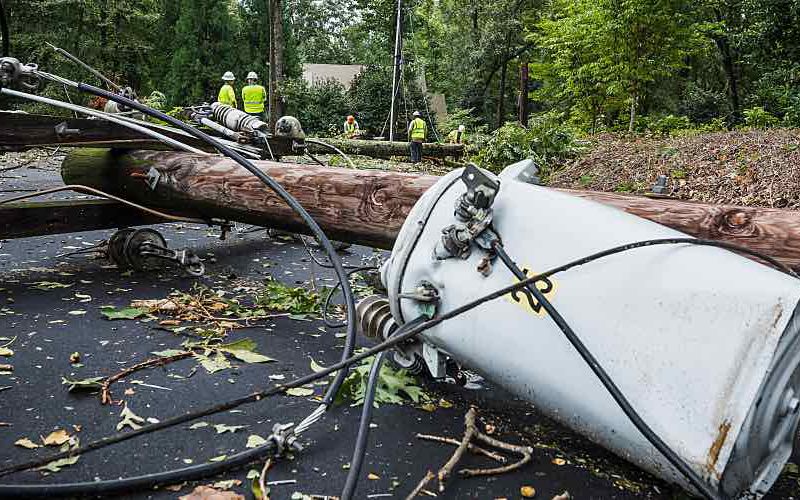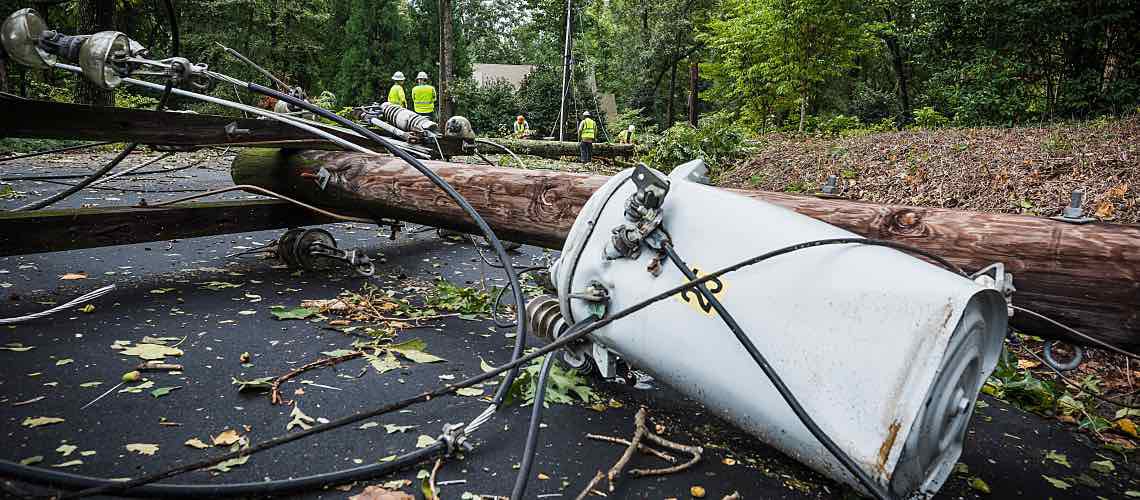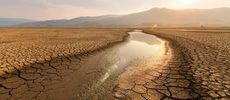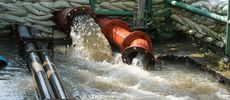Power Outages: Emergency Preparedness for Water Labs and Utilities


Over the last 20 years, the planet has been heating up, triggering more catastrophic storms than ever across the U.S. The result? Twice as many power outages from severe weather, according to Associated Press analysis published in The Guardian.
Tracking of U.S. power reliability began in 2013. But, the numbers are going the wrong way, showing that power outages occur more often and last longer than ever. Most U.S. customers experienced more than eight hours of outages in 2020. Some went without power for weeks. In addition to severe weather, a major contributing factor is decades-old infrastructure.
Only in the Northeast and California do electric utilities supply backup power when the grid goes down. Elsewhere, utilities would be happy if power could be restored in only eight hours. Although power utilities can anticipate outages from severe weather such as hurricanes and blizzards, those resulting from other causes—such as earthquakes and wildfires—can occur suddenly.
As outages become more severe, the impacts on water and wastewater utilities and test labs can likewise be devastating. Here's how you can manage during a power outage and get back online quickly.
Recognize Impacts on Water Utilities and Test Labs
For drinking water and wastewater utilities, losing electricity can result in pumps incapable of supplying water to local healthcare facilities or hydrants for firefighting. Pressure losses can allow contaminants to enter the water distribution system, requiring advisories to boil water. Sewage may back up and discharge into public rights of way and local waters. Residences and commercial buildings may become unsanitary and unsafe to live or work in, and businesses may have no choice but to close.
Among those businesses are water test labs. You may not be able to process samples already in your possession. Some samples may be destroyed, whereas others can't be processed quickly enough to meet standards. As you're recovering from the outage, you may not be able to offer usual products and services to customers.

Determine Power Requirements
To manage the impact of power outages, the Environmental Protection Agency (EPA) offers the publication Power Resilience: Guide for Water and Wastewater Utilities to help water systems build resilience and coordinate with electric and gas utilities. Utilities should all have reliable backup power sources, including generators, fuel supplies, on-site power, and microgrids.
Water labs also perform an essential service that's interrupted during power outages. To prepare, your team should assess your power requirements, ensure backup generators will be available when you need them, and contact fuel vendors. Collaborate with your local power provider to get on the priority list for power restoration, generation, and fuel.
To minimize downtime, utilities and labs should keep the following information current:
- Amount of power your facility uses, along with the voltage requirements
- Size of fixed or portable generators you'll need
- Placement for temporary generators
- Location to tie into power and personnel to make the connection
- Resources for both short- and long-term power outages
- Plans for on-site power generation
Develop an Emergency Response Plan
One of the essential documents your facility should have is an Emergency Response Plan. The EPA provides a template and instructions describing strategies, resources, plans, and procedures for water and wastewater utilities. Creating a plan includes determining which customers should take priority for restoring water services—such as hospitals and shelters—and how to provide an emergency drinking water supply.
You should also outline response activities by working with the Water/Wastewater Agency Response Network and your local Emergency Management Agency. Make sure you've prepared a series of standard news releases before you ever lose power that clearly and accurately communicate the situation to customers and the local media.
Due to water labs' vital role in public health and safety, you should also return to testing as soon as possible after a power outage—with the help of backup equipment if an outage might be long term. With the help of your staff, develop emergency preparedness protocols, so your lab can meet the demand for fast results while you bounce back.
Get Ready to Respond
Planning ahead to minimize the impacts of a power outage is critical. With thorough preparedness and practice, you should be ready to respond when an outage occurs. The EPA provides a series of "rip & run" checklists to help with emergency preparedness. The Power Outage Incident Action Checklist explains how to prepare for, respond to, and recover from a power outage. The list covers planning, coordination, and communication with customers, as well as items for your facility, service area, and power, energy, and fuel.
You can also list critical contacts along with additional resources on an incident response worksheet.
Prepare Now
Without pre-planning, a power outage can shut down your drinking water or wastewater facility or your water testing lab, often without warning. To recover rapidly, build power resilience and plan your response using the many resources available. Your community will appreciate your efforts to keep water flowing and safe when the lights go out.






